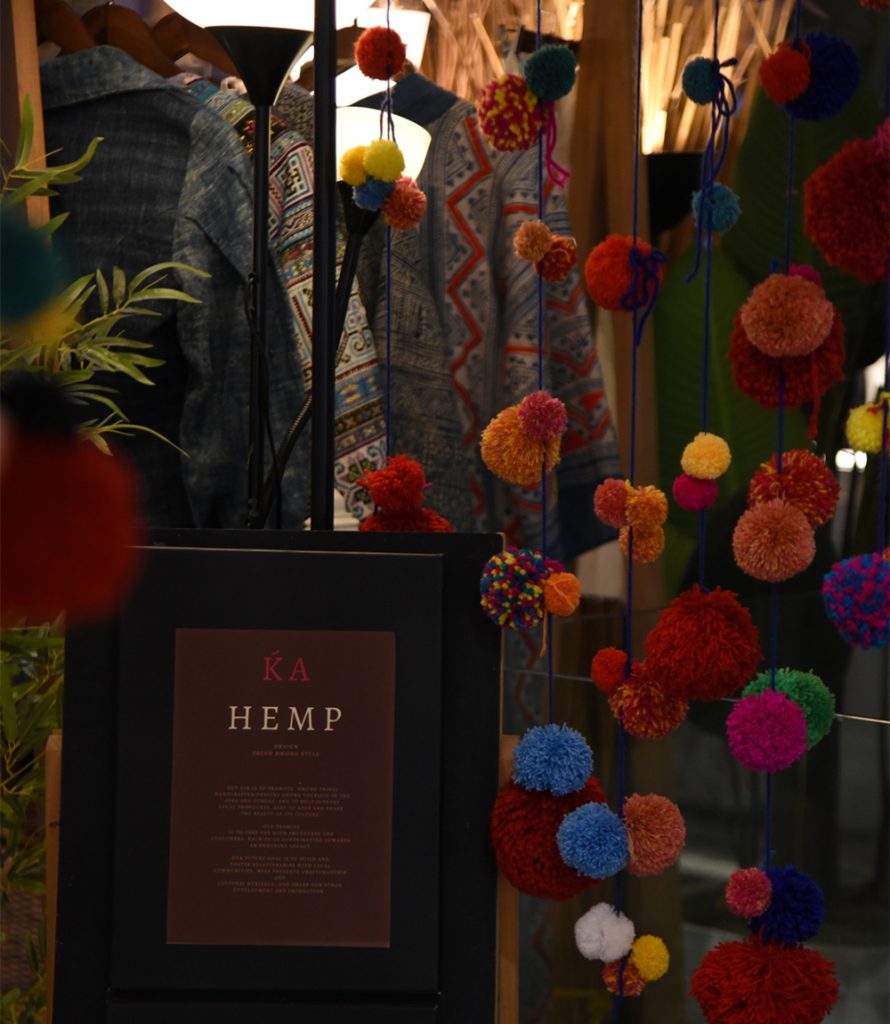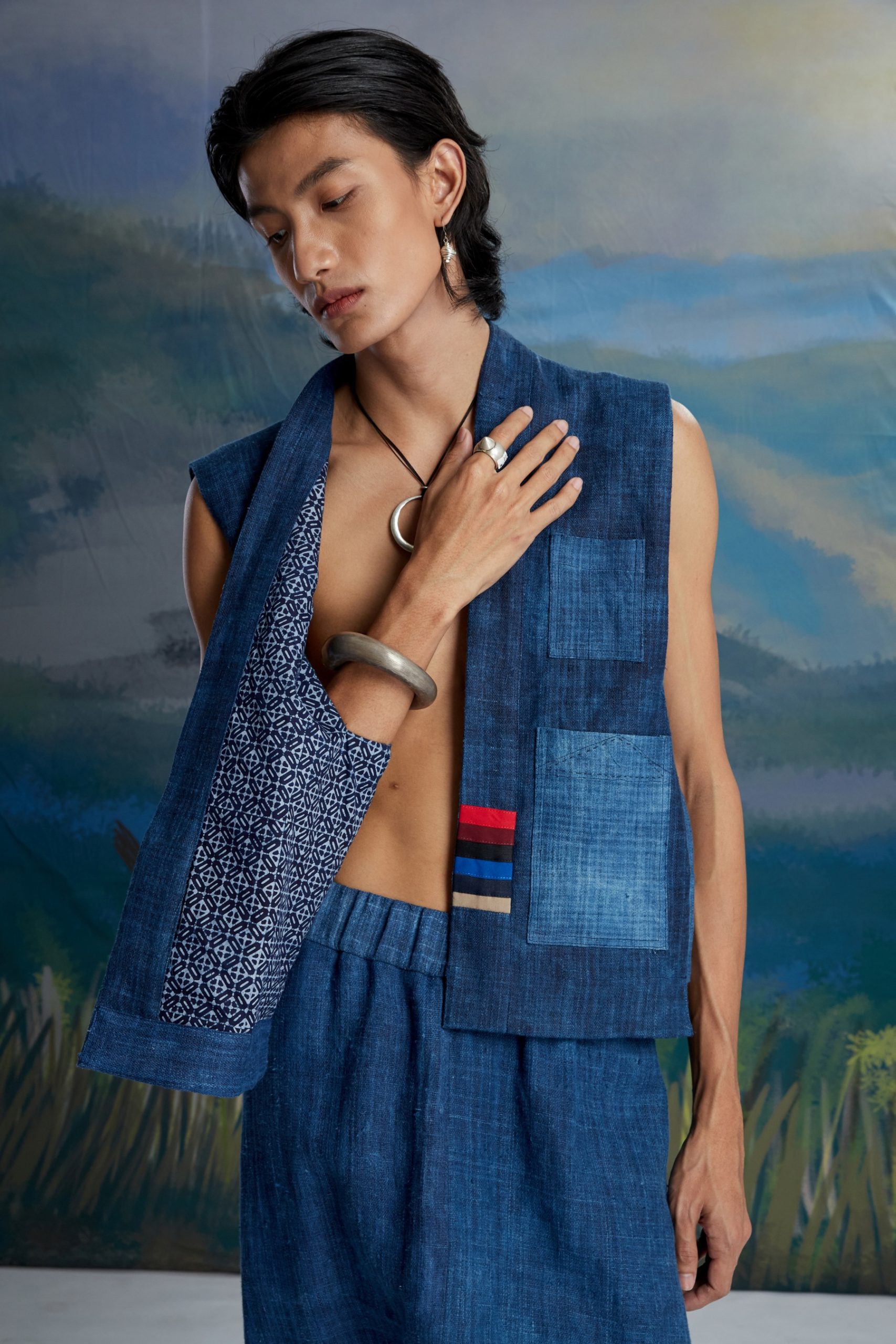
Available now at our online store and you can visit our flagship store at ICON SIAM, UG floor.
K’a Hemp are made from 100% natural fibers, made and designed by Hmong.


Available now at our online store and you can visit our flagship store at ICON SIAM, UG floor.
K’a Hemp are made from 100% natural fibers, made and designed by Hmong.


Indigo as Life of Hmong
Hmong’s natural indigo dyeing methods differ from place to place depending on convenience of each community. For example, additional substances for dyeing process can be ash water, lye water, quicklime, turmeric, wild liquors, sugarcanes, bananas, and guava leaves. All substances will be stirred until well combined. This makes indigo changing from blue to greenish yellow. The hemp yarn will be dipped into the indigo water so the color sticks to the yarn. Then the yarn will be twitched to let the air flow to transform the color from yellow to indigo blue. After dyeing, we will hang dry the yarn or fabric. If we need darker shades, we will dye 5-7 times.
Indigo = Kram
Kram, or Hom or indigo, is the king of color. It is the color that relates to cultures and way of life. It has been used for more than 1000 years and is still popular in this modern world. It is the color that our mother nature has sent to us to see the beauty of the nature, to understand nature, and to understand oneself.

Benefits of indigo
Medicine
Indigo has been used as herbal medicine starting from roots, limbs, and leaves. If any kid has fever, Hmong parents will pound Hom’s leaves and wrap the kid’s legs to reduce fever. Sometimes, pounded leaves are used to compress wounds to prevent inflammation. Leaves can also be boiled to drink to cure sore throats, diarrheas, and fever. It is domestic herbal medicine for a long time to protect our families and can easily be found at our home garden.
Indigo dye
Hom leaves have indigo color bead. After boiling or fermentation, color beads will come out and can be used for dye. Clothing in indigo colors is very popular as it can be worn most of the time. Natural indigo has special attributes such as bacteria prevention, no allergy, protect the fiber for longer use, UV protection while chemical indigo color does not have these attributes. As a result, natural indigo color from Kram and Hom is the King of Dye as it can stick to natural yarn better than other natural colors.
Sustainability
Hom plants are naturally grown near water, cool weather and 900 meters above sea level. It can be grown without fertilizer and pesticides. Limbs and leaves can be collected for usage all year round. Indigo dye is a cold dying process without heat so it can preserve the energy and not cause CO3 in the air. Water use in the natural indigo dyeing process has no dangerous chemical and is safe for producers, consumers, lives and environment.
Kram and Hom is the natural color with high value, beauty and is stylish.

The lifestyle we embrace in our Hmong community is deeply rooted in nature’s embrace, particularly since our homes are nestled in the mountains. Our daily lives are intertwined with the natural world, relying on it for our food, shelter, medicine, and water—essentially, nature is our lifeline.
Even our clothing is a testament to nature’s bounty, crafted from natural fibers, woven in traditional patterns, and dyed using methods passed down through generations, all of which are in harmony with the natural world.
Our community is rich in vegetables, fruits, and other edibles directly from nature’s pantry. This abundance means we don’t need much income to buy external goods. If someone has surplus food or resources, it’s shared within the community. This sharing culture is the cornerstone of our Hmong way of life, highlighting our deep connection and respect for nature and each other.

 Sabana N top
฿3,500.00
Sabana N top
฿3,500.00
 Blazer
฿7,500.00
Blazer
฿7,500.00
 Mari crop top
฿5,900.00
Mari crop top
฿5,900.00
 Estrela N top
฿5,900.00
Estrela N top
฿5,900.00
 Rainier N waistcoat
฿5,200.00
Rainier N waistcoat
฿5,200.00